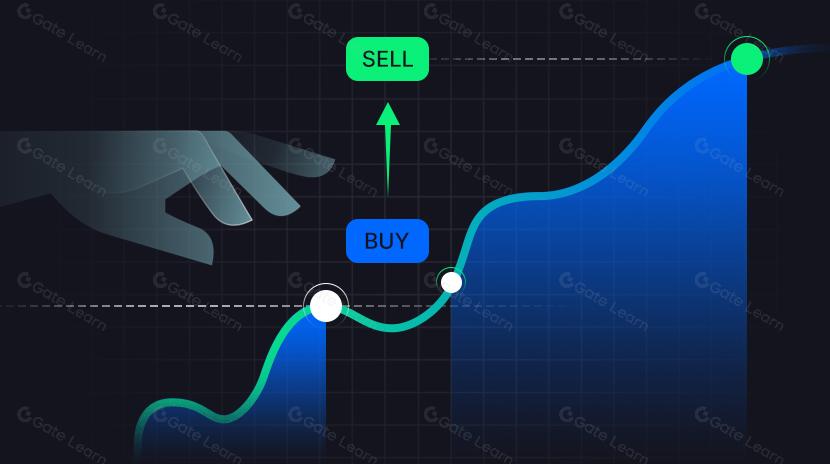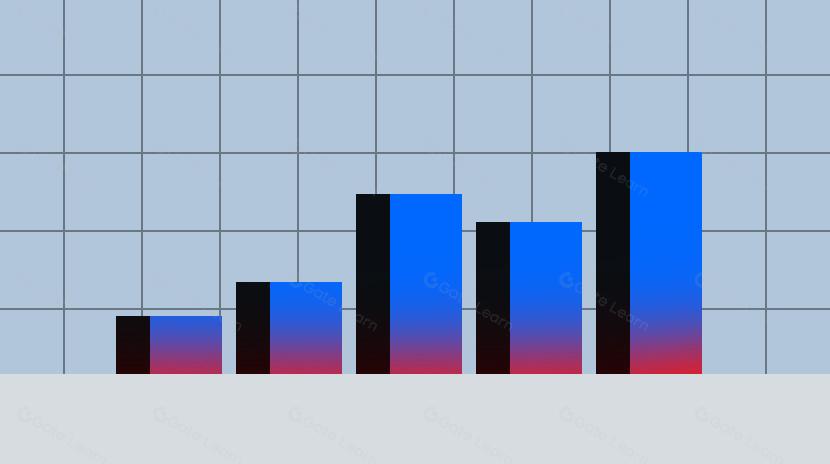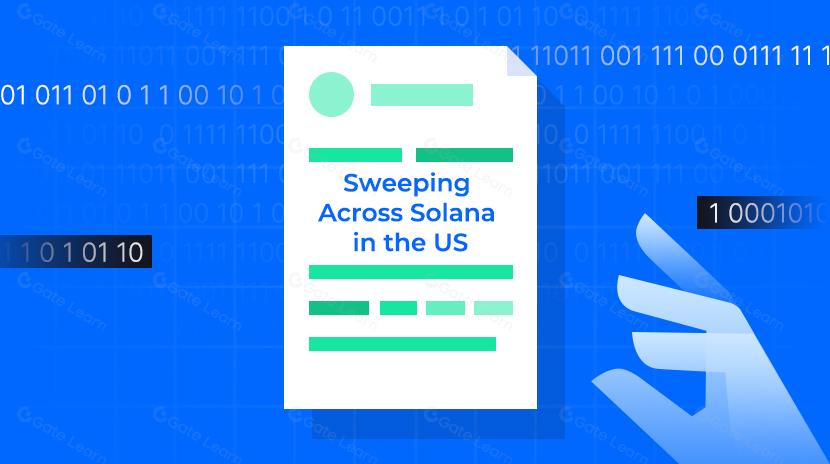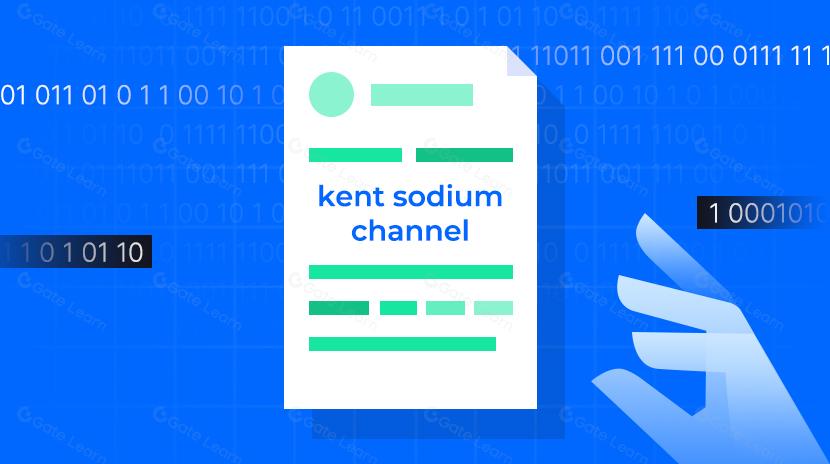Gate Research: TD Sequential Indicator Delivers 178% Gains
Gate Research Report: 2025年3月12日から3月26日の間、Bitcoin市場は感度が増し、Ethereumは限られた上昇勢いを維持しました。BTCのロング/ショート比率は0.95から1.10の範囲であり、リバウンド中の強気なセンチメントを示しています。デリバティブ市場の清算額は1日平均2億ドルで、以前の水準から74%減少しました。Bitcoinの実現された時価総額はわずか0.67%成長しましたが、新規資本流入の停滞を示しています。量的分析では、TDシーケンシャルインジケーターが市場転換点を特定するために使用され、最も優れた設定では最大178%のリターンを提供しました。概要
この2週間ごとの定量レポート(2025年3月12日~26日)は、多次元データ分析を通じて暗号通貨市場の最近のトレンドやダイナミクスについての詳細な分析を提供します。このレポートは、ビットコインとイーサリアムの主要指標に焦点を当て、契約清算イベントにも注目しつつ、TDシーケンシャル指標の詳細な分析とバックテストも提供します。
抽象
- 過去2週間、Bitcoin(BTC)市場はますます敏感になりましたが、Ethereum(ETH)は弱い価格変動を示し、上昇モメンタムを欠いていますが、そのボラティリティは比較的低いままです。
- BTCのロング/ショート取引比率は0.95から1.10の間で推移し続けており、価格の反発期においてもトレーダーはまだロングポジションに強い関心を示しています。
- デリバティブ市場の平均日次清算は、以前の期間と比較して74%減の2億ドルに低下しました。
- ビットコインの実現市場キャップ成長率はわずか0.67%であり、新規資本流入がほぼ停滞していることを示しています。
- TDシーケンシャルインジケーターを使用して価格反転を予測すると、最適なパラメータ設定下で収益率が最大178%に達しました。
市場概況
1. Bitcoin & Ethereum Volatility Analysis
過去2週間で、Bitcoin(BTC)は3月中旬の$80,000レベルでの短期ボトム形成後、着実に反発し、3月26日には$87,000まで上昇しました。一方、Ethereum(ETH)はより控えめな上昇を見せ、約$2,000から$2,100まで徐々に上昇しています。ETHの総合的な価格上昇はBTCに遅れをとっており、Ethereumに対する弱いブルッシュセンチメントを示しています。
チャート1:BTCは87000ドルに反発し、一方ETHは2100ドル近くにとどまり、比較的弱いパフォーマンスを示しています。
ボラティリティに関して、BTCは一般的にETHよりも大きな変動を示しており、市場参加者はビットコインの価格変動により反応している可能性が高いことを示しています。短期取引の感情が引き続き支配的です。3月初めに見られた高いボラティリティと比較して、BTCとETHは現在、より安定した段階に入ったようで、極端な感情が薄れ、市場の感情がより合理的になりつつあることを示唆しています。
チャート2:BTCはETHよりもボラティリティが高く、より強い価格変動を反映しています。
全体的に、市場はボラティリティが圧縮する段階に入りつつあり、BTCはETHよりも強い勢いを示しています。低ボラティリティが続く場合、今後のトレンド確認の兆候となるかもしれません。ただし、急激なボラティリティの上昇は方向性のブレイクアウトを示す可能性があり、投資家は短期の市場変動に伴うリスクに注意する必要があります。短期的には、BTCの資本流入とボラティリティトレンドに注目することが市場のリスク選好の重要な指標となり得ます。[1][2]
2. Bitcoin and Ethereum Long/Short Taker Size Ratio (LSR) Analysis
ロング/ショートテイカーサイズ比(LSR)は、攻撃的な買い手と売り手の取引量を測定し、市場のセンチメントやトレンドの強さを評価するための重要な指標です。1を上回るLSRは、より攻撃的な買い手(ロング)が多いことを示し、市場の強気なセンチメントを示唆しています。
Coinglassのデータによると、BTCのLSRは過去2週間でわずかに上昇傾向を示し、0.95から1.10の間で変動しています。BTCが安定し反発しても、LSRは大幅に低下せず、引き続き強気なセンチメントと比較的楽観的な市場トーンを示しています。一方、同じ期間中ETHのLSRは0.90から1.05の間で推移しましたが、変動はより緩やかでした。ETHの軽微な価格回復中、LSRは目立って強化されず、市場参加者がイーサリアムの上昇に慎重な姿勢を維持していることを示しています。価格は底からわずかに反発していますが、その勢いは弱く、慎重な資本流入を反映しています。
BTCのLSRは全体的に価格トレンドと同期して移動しており、上昇の可能性に対する信頼が高まっていることを示唆しています。一方、ETHは回復フェーズ中に強力なロングサイドサポートを欠いており、今後も近い将来は横ばいの取引が続く可能性があります。投資家は市場センチメントの変化の重要なシグナルであるLSRの動向に注意を払うようアドバイスされています。[3]
チャート3: BTCのLSRは0.95から1.10の間で推移し、リバウンド中に継続的な買い手の関心を示しています。
チャート4: ETHのLSRは動きが遅く、0.95から1.05の間で安定しています。
3.オープン インタレスト 分析
Coinglassのデータによると、3月12日以来、Bitcoin(BTC)のオープンインタレストは明確な反発を示し、約490億ドルから約580億ドルに急上昇しました。これは市場への資金の顕著な回帰を示しており、短期取引のセンチメントがますますポジティブに転じています。最近の価格回復が急増する可能性があり、改善されたリスクアピタイト、またはレバレッジポジションの再構築が示されており、BTCに対する短期的なブルッシュ期待が高まっていることを示しています。
一方、Ethereum(ETH)のオープンインタレストも同じ期間にわずかに上昇していますが、その勢いははるかに小さく、$19 billionから$21 billion程度に控えめに上昇しています。このより抑制された増加は、ETHに対するレバレッジトレーダーの中での慎重さを反映しており、BTCに比べてETHの反発への信頼が弱いことを示しています。
BTCの強いオープンインタレストの回復は、投資家のリスク適応力が徐々に向上する中、短期的にはビットコインに対する市場のセンチメントがより傾いていることを示しています。しかし、オープンインタレストが引き続き上昇しない場合、BTCは再び相場の調整フェーズに入る可能性があります。資本が引き続き流入するかどうかが市場の次の方向を決定する上での重要な要素となります。
チャート5:BTCのオープンインタレストは強い勢いを示し、一方でETHの回復は限定されており、その反発への信頼感が弱いことを反映しています。
4. ファンディングレート分析
過去2週間で、BTCとETHの資金調達率は急激に変動し、頻繁に上下の揺れがあり、市場の乱高下するレバレッジ感情と不確かな短期的な方向を浮き彫りにしています。BTCの資金調達率は一時的にマイナス圏に下落し、-0.01%まで低下しました。これは、ショート売りが一時的に優位に立ち、BTCの短期的な動きについての懸念が残っていることを示しています。
ETHのファンディングレートも頻繁に変動したが、その大きさはBTCよりもわずかに低かった。これは、比較的穏やかな投機的環境や、イーサリアムの周りでのより穏やかなレバレッジ取引活動を反映している。
BTCやETHの価格が過去1週間で回復したとしても、資金調達率はそれに続いていないことに注目すべきです。その代わりに、地元のピーク後に迅速に撤退しました。この乖離から、現在の急上昇にはレバレッジされた資本からの強力なサポートが欠如している可能性が示唆されます。資金調達率の繰り返される変化は、市場がまだ牛とベアの間でのせめぎ合いにあり、明確な資本流動のトレンドがまだないことを意味しています。[5][6]
チャート6:BTC資金調達金利は何度もマイナス圏に落ち、熊の資本が一時的に市場を支配したことを示しています。
5. 暗号通貨契約清算トレンド
Coinglassのデータによると、3月12日以降、暗号派生市場での清算活動は大幅に減少しています。 3月初旬に見られた大規模な清算に比べて、最近のボラティリティははるかに抑制され、レバレッジの調整もより制御されています。 これは、市場が統合段階に入っていることを示しています。
興味深いことに、ショートポジションの平均清算金額は、価格の反発中に一部のベアリッシュトレーダーが強制的に清算されたことを示すように、ロングポジションよりもわずかに高かった。一方、ロングの清算は通常水準に戻り、一部のブルッシュセンチメントの回復を反映していますが、依然として慎重な状況です。
全体的に、清算データは、2月下旬から3月初めの高いボラティリティの段階からかなり冷え込んでいることを示しています。現在の平均日次清算額は約2億ドルで、以前のレベルから74%減少しており、短期の市場リスクが大部分消化されたことを示しています。価格が着実に上昇し続け、清算レベルが低いままであれば、投資家の信頼感がさらに向上する可能性があります。[7]
チャート7:3月12日から3月25日までの契約市場における平均日次清算額は2億ドルに減少し、以前の最高額から74%減少しました
6. ビットコインの実現時価総額成長率はわずか0.67%です
Glassnodeのデータによると、Bitcoinの実現時の時価総額の月間成長率はわずか0.67%です。実現時の時価総額は、各BTCが最後にチェーン上で移動した価格に基づいて計算され、実際の資本コストのより明確なイメージを提供します。この遅い成長は新しい資本流入の不足を示しており、より高い価格をサポートするために必要な買い圧力が弱まっていることを示しています。
BTCは、2月の高値である97,000ドルから現在の87,000ドルまで10%以上下落しました。この下落は単なる技術的修正にとどまらず、流動性の縮小やトレーダーの熱狂の冷めなど、より深い問題を反映しています。
市場は、基本的なサポートや新たな資本の強力な支援なしに、さらなる下方リスクに直面する可能性があります。現時点では、投資家は資本流動性に注意を払うべきであり、これにはETFの流入/流出、ステーブルコインの時価総額のトレンド、アクティブアドレスなどのオンチェーン活動が含まれます。これらは、マクロ経済環境の変化と組み合わせて、リスク評価において重要な要素となります。現在の状況では、無謀な追いかけや大きなポジションは避けるべきです。[8]
チャート8:ビットコインの実現時価総額の成長率はわずか0.67%であり、新規資本流入がほぼ停滞していることを示しています
数量分析- TDシーケンシャル:市場の転換点の早期警告システム
(免責事項:この記事のすべての予測は、過去のデータや市場のトレンドに基づいています。これらは参考用であり、投資アドバイスや将来の市場パフォーマンスの保証とは見なされるべきではありません。投資家は関連する投資に従事する際にリスクを十分に評価し、慎重な決定をする必要があります。)
1. インジケーターの概要
TDシーケンシャルは、テクニカルアナリストであるトムデマークによって開発されたカウンティングベースのシステムであり、株式、先物、および暗号通貨市場全体で広く使用され、潜在的なトレンド転換を特定するために使用されます。中心的な考え方は単純です:持続的な価格の動き(上向きまたは下向きのいずれか)の後、トレンドは「疲労」の兆候を示し始め、可能性として逆転または少なくとも一時停止を示します。この分析は、実際の取引シナリオでの実用的な効果を評価するためにインジケーターをバックテストします。
2. コア計算ロジック
TD Sequentialインジケーターのコア計算は価格比較メカニズムに基づいています。現在の価格を、指定された期間前の価格と比較することで、その相対的な位置や大きさを評価します。LAG_N). TDカウントは、初期値0から開始され、これらの比較に基づいて連続的に更新されます:
- 現在の価格が価格より高い場合LAG_Nperiods ago、TDカウントが1増加し、最大13になります。
- 現在の価格が低い場合、TDカウントは1減少し、最小値は13になります。
- 価格が同じ場合、TDカウントは0にリセットされます。
この方法は、-13から13の範囲内でTD値を生成し、トレーダーが現在の価格水準の相対的な強さや弱さを評価し、ポテンシャルな反転ゾーンを特定することができます。
3. トレーディング戦略アプリケーション
トレーディングロジック:
- 上昇トレンド中、TD値がより高い数値(例:10)から特定のしきい値(例:9)に減少すると、今後の価格下落を示す可能性があり、ポテンシャルなショート取引を示唆するかもしれません。
- ダウントレンドで、TD値が低い数字(例:-10)からより負の値(例:-9)に上昇すると、近いうちに反発が起こる可能性があり、潜在的な買いトレードを示すかもしれません。
取引の例:
2025年1月3日にBTCの15分間の永続契約を使用した例を示します。
TD値は現在の価格の相対位置を決定するために使用されます。BTC_Closeはビットコインの15分足の終値を指します。差分は現在の期間の価格と前の期間の価格の差を表します。シグナルはエントリーシグナルを示し、1はエントリー条件が満たされていることを意味し、0は何も行動されないことを意味します。
価格比較の基準値は前期を想定しています(ただし、他の間隔に調整できます)。 TD値が7から始まり、現在の価格が前期と比較して引き続き下落する場合(Diffが緑で表示される)、TD値はその度に1ずつ減少します。逆に、価格が上昇すると(Diffが青で表示される)、現在の価格が前回より高いことを示し、TD値が1ずつ増加します。このメカニズムは価格の相対的な位置を決定するために使用されます。
エントリー条件が現在のTD値が1と定義され、前のTD値が現在の値よりも大きいとされる場合、これは中心点(0)に近づいている下降トレンドを示し、可能性逆転を示唆しています。これらの条件が満たされると、シグナルが1の場合、例えば2025年01月03日05時15分にクロージング価格で買いオーダーがトリガーされます。

戦略パラメータの説明:
この戦略は、トレーディングシグナルをトリガーする条件を決定するために、LAG_NとN_SIGNALの2つのパラメーターを使用しています。
1. LAG_N(ラグ期間)
LAG_Nは、トレンドの変化を評価するために現在の価格がどれだけ過去の期間と比較されるかを定義します。
LAG_Nが1の場合、各終値は前の期間の終値と比較されます。例えば、BTC価格が97,019.1から96,930.5に下がると、TD値は7から6に減少します。LAG_Nが4の場合、現在の価格は4期前の価格と比較され、これにより短期市場のノイズが軽減され、より安定したトレンド識別が可能になります。
2. N_SIGNAL(シグナルトリガースレッショルド)
N_SIGNALは、前のTD値が現在の値よりも大きい必要がある条件で、取引シグナルがトリガーされるTD値を定義します。前のTDが13でN_SIGNALが13の場合、条件が若干変わります。前のTDは、現在のTDよりも大きいか等しい必要があります。これはTD値の上限に沿ったものです。
N_SIGNAL = 1の場合、現在のTD = 1かつ前のTD > 現在のTDの時に買いシグナルが発生します。例えば、2025-01-03の05:15:00に、TDの値が2から1に下がると、買いシグナルが生成されます。これは、最近の下降トレンドが収束に向かっている可能性があり、反発が起こる可能性が高いことを示しています。
これらの2つのパラメータを調整することで、戦略をさまざまな市況に微調整し、リスクを減らしながら精度を向上させることができます。
4.パラメーターの最適化とバックテストの検証
この取引戦略の中核ロジックは、TDシーケンシャルインジケータを使用して価格動向の相対的な位置を評価することに基づいています。価格の位置を過去のデータと比較し、トレンドの方向性や過疲労のサインと組み合わせることで、潜在的な転換点を特定することを目指しています。価格が過度に高くなったり低くなったり、平均に戻ったりする場合に反転が発生する可能性があります。TD値は-13から13の範囲内に制約されており、このようなシナリオを捉えます。このバックテストでは、保有期間はNローソク足間隔で固定されており、15分BTC_USDT永続契約が使用されています。バックテスト期間は2024年3月24日から2025年3月24日までです。手数料やスリッページなどの取引コストは考慮されていませんでした。
最適なパラメータの組み合わせを特定するために、次の範囲を対象にバックテストを実施しました:
- LAG_N: 0 ~13
- N_SIGNAL: -13~13
これにより、合計14×27=378のユニークなパラメータの組み合わせが生じます。
各パラメータセットは750以上の取引を生成したため、サンプルサイズは統計的有効性の要件を満たしています。したがって、取引回数に基づいてフィルタリングを行わず、代わりに平均収益が最も高いトップ5つの組み合わせを選択しました。最も優れた5つのパラメータ組み合わせは次のとおりです。
- LAG_N: 3, N_SIGNAL: 8
- LAG_N: 2、N_SIGNAL: 8
- LAG_N: 4, N_SIGNAL: 8
- LAG_N: 4, N_SIGNAL: 7
- LAG_N: 11, N_SIGNAL: 5
トップ5の戦略を特定した後、それらを組み合わせるために均等な重み付けを適用し、累積リターン、シャープレシオ、および全体的な収益性を分析するためにプロットしました。
チャート:均等配分での5つのストラテジーの累積リターン曲線(各区間は15分を表す)
チャート: 最高のシャープレシオである3.72は、4番目の保有期間で発生しました
チャート:178%の最大リターンは61回目の保有期間で達成されました
5. トレーディング戦略の要約
等しいウェイトを使用して、5つの最も良いパフォーマンスをするパラメーターセットを単一の複合戦略に組み合わせました。その結果、リスク調整リターン(シャープレシオ)は、4つのインターバルのポジションを保持すると3.72にピークに達しました。しかし、その時点での総リターンはわずか77%であり、LAG_4戦略は比較的保守的でボラティリティが低く、リスクをコントロールする効果的なものの、より高い利益を得るためにより多くのボラティリティを引き受ける長期間の保有期間と比較して、絶対リターンの面でパフォーマンスが低い可能性があります。総リターンに関しては、保有期間が増加するにつれて、リターンが続けて上昇し、61回目のインターバルで最大の178%に達しました。このポイント以降、リターンは減少し始めました。この戦略は、同じ期間に約35%の利益を上げたBTCを単に保有することと比較して、著しく向上したパフォーマンスを示しました。
最適なパラメーターの組み合わせを分析すると、最もパフォーマンスの高いLAG_N値のほとんどが 2 から 4 の間にあることがわかります (11 の外れ値は 1 つだけです)。これは、この戦略が主に短期的な価格変動に焦点を当てており、最近の価格変動を使用して反転シグナルを特定し、中短期的な機会を捉えていることを示しています。さらに、N_SIGNAL値は主に7〜8の周りに集まっており、TDインジケーターが比較的高い値に達したときに最良のシグナルが発生する傾向があることを示唆しており、市場の反転をより明確に確認していることを示しています。これは、顕著な価格下落後に取引を開始する戦略の傾向も反映しています。全体として、これらの調査結果は、この戦略が中短期の反転取引に最も適していることを示唆しています。これは、短期的な価格比較と、より短い保有期間内で反転の機会を捉えるためのシグナルアクティベーションの比較的高いしきい値に依存しています。このアプローチは、より安定したリスク調整後リターンを生み出すことを目的としていますが、ポジションを長く保有しすぎるとパフォーマンスが低下する可能性があります。
バックテストの結果は有望ですが、リバーサル戦略は本質的に転換点を求めています。トレンドの方向を誤ると、大きな損失につながる可能性があります。したがって、下降リスクは引き続き注意深く管理される必要があります。
結論
3月12日から3月26日まで、暗号通貨市場は「慎重な感情の中での価格反発」という構造的パターンを示しました。BTCとETHの両方のボラティリティが低下し、短期の極端な感情が冷却されていることを示しています。BTCに対する市場のセンチメントはETHと比較してわずかに改善していましたが、全体的なレバレッジの勢いは弱いままでした。オンチェーンおよびデリバティブデータによると、オープンインタレストの回復と清算の急激な減少が見られ、レバレッジ解消プロセスがほぼ完了していることを示しています。ただし、Bitcoinの実現市場キャップの成長の鈍化は、新規資本流入の不足を示唆し、取引活動が低下していることを示しています。
数量分析セクションでは、市場価格の反転を予測することを目的としたTDシーケンシャル指標を使用してバックテストを実施しました。最適なパラメータ設定の下で、戦略は最大178%のリターンを達成しました。ただし、TDシーケンシャルが万全の予測ツールではないことに注意することが重要です。実際の市場状況では、急激なボラティリティや誤ったシグナルの影響を受ける可能性があります。投資家には、TD戦略を多次元データ分析と堅固なリスク管理で補完し、慎重なアプローチで合理的かつよく考えられた取引の決定をすることをお勧めします。
参照:
- Gate.com,https://www.Gate.com/trade/BTC_USDT
- Gate.com,https://www.Gate.com/trade/ETH_USDT
- Coinglass,https://www.coinglass.com/LongShortRatio
- Coinglass,https://www.coinglass.com/BitcoinOpenInterest?utm_source=chatgpt.com
- Gate.com,https://www.Gate.com/futures_market_info/BTC_USD/capital_rate_history
- Gate.com,https://www.Gate.com/futures/introduction/funding-rate-history?from=USDT-M&contract=ETH_USDT
- Coinglass,https://www.coinglass.com/pro/futures/Liquidations
- Glassnode,https://studio.glassnode.com/charts/ba1ec93d-85f4-41fe-5606-798a2f30013a?s=1679144783&u=1742303183
Gate Research
Gate Researchは包括的なブロックチェーンと暗号研究プラットフォームであり、技術分析、ホットなインサイト、市場レビュー、業界研究、トレンド予測、マクロ経済政策分析を含む読者に深い内容を提供しています。
クリックしますリンクもっと学ぶ
免責事項
暗号通貨市場への投資には高いリスクが伴います。投資家は独自の調査を行い、投資決定を行う前に購入する資産や商品の性質を十分理解することをお勧めします。Gate.comはそのような投資判断によって引き起こされる損失や損害について責任を負いません。
関連記事

現物グリッド取引 ユーザーガイド(基本版)

APIを使用して量的取引を開始する方法

「ミーム」革命:米国のソラナを席巻

ケルトナーチャネルの理解

暗号通貨チャートの読み方
